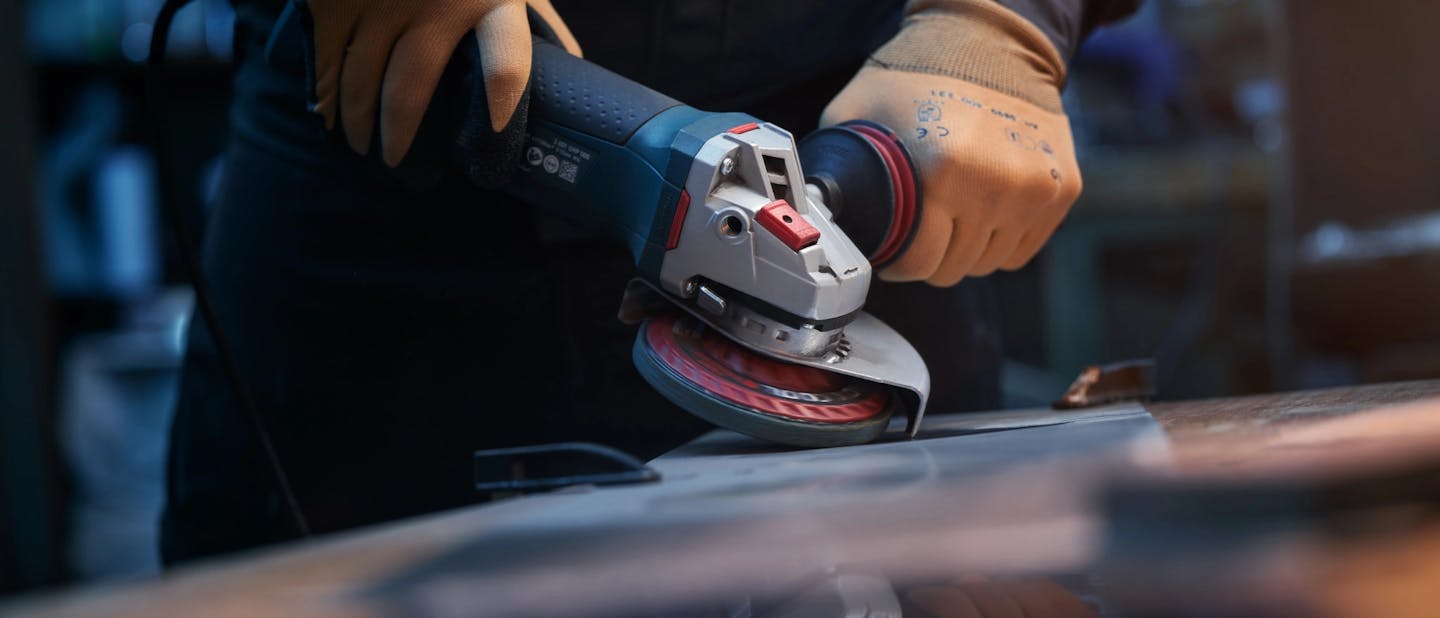
Why power of the tool matters: Getting the most out of premium abrasives
These products are very aggressive, built to remove material quickly and effectively. However, to tap into their full potential, specific conditions need to be met. And here’s where the problem with the cordless grinder comes into play.
Recently, we had a case where one of our clients requested a return of a top-quality grinding product, coated with ceramic grains. Customer said that the product lasts very short time and stops grinding after very short time. Curious to understand what went wrong, we asked the customer for more details and decided to visit their location to assess the situation in person.
When we arrived, we noticed that the customer was using a cordless angle grinder. At first glance, this seemed like a great idea! After all, cordless grinders are incredibly practical, offering freedom of movement without the hassle of nearby electrical outlets or tangled cords. For a worker on the go, it’s the perfect solution, right?
Well, not always. In this case, there was one significant issue: the cordless angle grinder simply didn’t have enough power to handle the aggressive abrasive material effectively.
The science behind ceramic abrasives
Ceramic grains are designed to work best under high pressure and at high speeds. One of the defining features of ceramic abrasives is their self-sharpening capability. This means that as the grains wear down, small fragments break off, revealing a new, sharp edge beneath—like breaking a piece of glass. This continual renewal of the cutting edge makes ceramic abrasives incredibly efficient, ensuring that they stay sharp for the entirety of their use.
These products are very aggressive, built to remove material quickly and effectively. However, to tap into their full potential, specific conditions need to be met. And here’s where the problem with the cordless grinder comes into play.
The problem: lack of power
For ceramic grains to work properly, they need enough force to break the top layer of the grain, enabling the sharpening effect to kick in. If the grinder doesn’t generate sufficient speed and pressure, the top layer doesn’t break off. Instead, the grain smooths out, almost like it’s being polished rather than sharpened. What happens next? The abrasive no longer cuts but instead glides over the surface, creating friction and heat. This results in what's often called "glazing" or "glassy" behavior—where the surface of the grain becomes smooth and ineffective. In this scenario, the premium product might only deliver 20% of its potential before it’s rendered useless.
In the case of our customer, the cordless grinder lacked the necessary power. As soon as the operator applied the grinder to the workpiece, the rotational speed dropped, the grinder slowed down, and the abrasive couldn’t do its job. Unfortunately, this led to the underperformance of what should have been an excellent, high-performing tool.
The lesson: More power, better results
This experience highlights a lesson for anyone working with abrasives: the stronger the tool, the better the abrasive performs. It’s not just about choosing the right abrasive; it’s about pairing it with the right machine to maximize its performance.
The same principle applies across all abrasive types, whether you’re working with ceramic, zirconia, or any other high-performance material. These products are engineered to work under specific conditions, and when those conditions aren’t met—such as when the grinder lacks power—the results will be disappointing, regardless of the quality of the abrasive.
The investment in better tools pays off
While cordless tools are great for their convenience, sometimes investing in a more powerful, corded tool can make a huge difference in the long run. Yes, it might be more expensive upfront, but you’ll get better use out of your abrasives and ultimately save money by making them last longer. Premium abrasives like those with ceramic or zirconia coatings are designed to handle tough jobs. But without the right tools to power them, even the best abrasives will fall short of expectations.
So next time you’re faced with a challenging grinding or cutting job, consider whether your tool has the power it needs to bring out the full potential of your abrasive materials. The right combination of tool and abrasive will give you faster, more efficient results—and in the end, that’s a win for both your time and your budget.